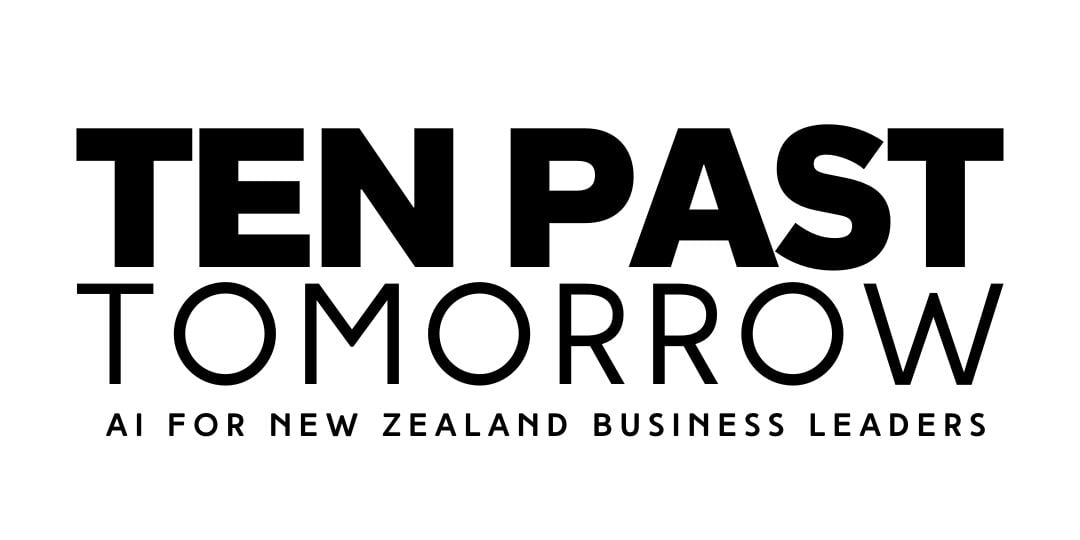Learning from Apple's Problem: Transforming Businesses for the AI Revolution
The time is ten past tomorrow; and I know that because I’m wearing an Apple watch.
In this article, I’m going to reference an excellent article I read yesterday by Nathan Baschez about the death knell ringing for Apple and their iPhone if they don’t evolve it for the AI age we’re entering.
If you haven’t read the article, I recommend you do. It’s insightful, well considered, and easy to read.
Below, I will draw parallels between Apple's AI problem and the challenges facing businesses, and pose some questions and things to consider for us as New Zealand business leaders entering the AI age.
Apple’s AI problem
Apple is facing a major challenge: how to update its flagship product, the iPhone, to leverage the power of AI.
The iPhone is the cornerstone of Apple's $2.6 trillion empire, but it also depends on user habits and expectations that are changing rapidly due to AI.
Baschez’s position is that Apple has two options: adapt or die. He feels Apple needs to rethink its iOS operating system and make it more compatible with AI applications and services. It also needs to improve its own AI assistant, Siri, and make it much more useful and reliable, to come into line with the rapidly rising customer expectations that AI innovations are causing.
I think businesses face a similar challenge: how do we update our products, services, and processes to take advantage of AI innovation?
And what are the potential consequences if we don’t? Do we face the same ‘adapt or die’ ultimatum that Baschez thinks the iPhone does?
For my money, I tend to agree with Nathan Baschez.
I think as business leaders we need to (quickly) identify the areas where AI can add value to our businesses; such as automation, prediction, personalization, or innovation. We also need to evaluate our current capabilities and readiness for AI adoption.
Some questions that spring to mind are:
- What are the main pain points or opportunities for my business that AI can address?
- What are the benefits and costs of implementing AI solutions for my business?
- What are the consequences for my business if I don’t?
- What are the skills and resources I need to develop or acquire for AI adoption?
How can we ask the same questions of ourselves that Apple is, and identify the changes we will inevitably face?
Apple are no doubt very aware that user habits and expectations are shifting due to AI.
Users want more convenience, personalization, and intelligence from their devices. They want to interact with them through voice, gesture, or vision. They want to access information and services through conversational agents or chatbots. The whole game has levelled up for the iPhone, due to AI innovation.
Apple will be asking itself how it can meet these changing demands and preferences. Very soon, it will clearly need to redesign its user interface and user experience to make them more intuitive and adaptive. It will also need to enhance its ecosystem of apps and services to make them more integrated and seamless.
As business leaders, I think we need to ask ourselves the same questions: how can we meet the changing habits and expectations of our customers?
We need to quickly get a temperature reading on our customers' needs, preferences, and behaviors, and how they are all evolving in the face of AI innovation.
Some questions that might help with this line of thinking, are:
- How do I collect and analyse my customer feedback and data? How do I do sentiment analysis on this data, to monitor changes and trends?
- How do I segment my customers and tailor my offerings accordingly? Does this need to change with new expectations being caused by AI?
- How do I communicate and engage with my customers? Will I do that differently because of new AI capabilities hitting the market?
- How do I collaborate with other businesses or platforms to provide better value for my customers?
Do we all face similar stakes that Apple does?
I didn’t realise just how dependent Apple is on their iPhone until I read Baschez’s article.
Apple faces high stakes for its business: half of its annual revenue comes from iPhone hardware sales, but much of the other half depends on the success of the iPhone as well.
If the iPhone fails to keep up with the AI era, Apple could lose its competitive edge and market share.
How much of your business’s revenue depends on technology or systems that could become obsolete soon because of AI advances?
I believe that, just as Apple does, as business leaders our future revenue also depends on our ability to stay relevant and competitive in the AI era. If we fail to update our products, services, or processes with AI, we too will certainly lose customers or be disrupted by new entrants.
As a business owner, this makes me think:
- How much of my revenue comes from technology or systems that could become obsolete soon from AI advances?
- How fast is my industry or market changing due to AI?
- How strong is my competitive position and advantage in my industry or market?
- How do I anticipate and respond to changes in customer demand or behavior?
- How do I innovate and differentiate my products or services from my competitors?
- How flexible and agile is my business model and strategy to adapt to AI?
- How willing and able am I to learn and adopt AI?
What’s the simplest path forward for you, towards AI evolution?
Apple has a complex ecosystem of components that make up the iPhone experience. These include the hardware, the software, the apps, the services, the accessories, and the network. Each component has its own challenges and opportunities for AI evolution.
It’s likely you have a similar ecosystem of components that make up your business experience. These include the product, the service, the process, the customer, the partner, and the market. Each component has its own challenges and opportunities for AI evolution.
In his article, Nathan Baschez asks what Apple’s “simplest path forward” is; the first steps towards moving the iPhone forward in the AI age.
It’s interesting to ask ourselves the same question. What is the simplest path forward for business owners in the AI age?
I think the path is to identify the business component that has the most potential for AI impact and start from there.
For example, some businesses may focus on improving their product quality or functionality with AI. Others may focus on enhancing their service delivery or customer satisfaction with AI. Still others may focus on optimizing their process efficiency or productivity with AI.
Some questions to consider are:
- Which component of my business ‘experience’ has the most potential for AI impact (hint; it’ll be a component that relies heavily on data, is repetitive and manual)?
- What are the goals and metrics that I want to achieve with AI in that component?
- What are the resources and tools that I need to implement AI in that component?
- What are the examples of best practices that I can learn from in using AI in that component?
Moving forward…
AI is a powerful force that is reshaping the world of business. Like everyone, as New Zealand business leaders we need to be aware of the implications and opportunities of AI for our businesses.
We need to ask themselves some critical questions and consider some important factors for updating our businesses for the AI era.
Just as Apple needs to update iOS for the AI era, we need to update our products, services, and processes for the AI era. We need to adapt or die. We need to evolve or reinvent. We need to find our simplest path forward.
(PS. It may hearten you to know that a healthy portion of the “questions to ponder” that I’ve asked throughout this article have AI solutions to them.)






